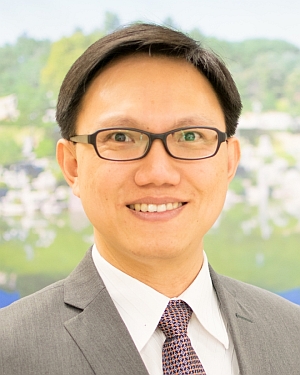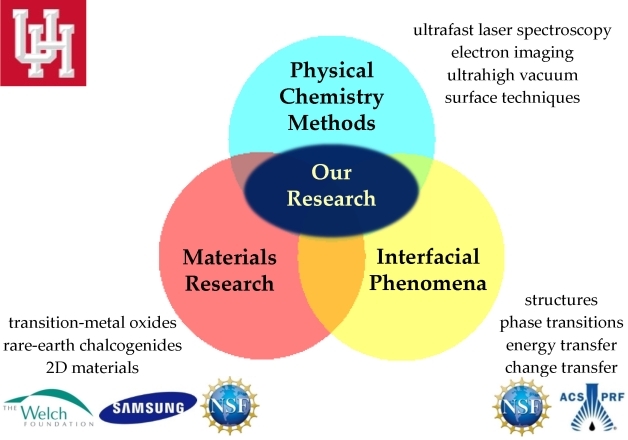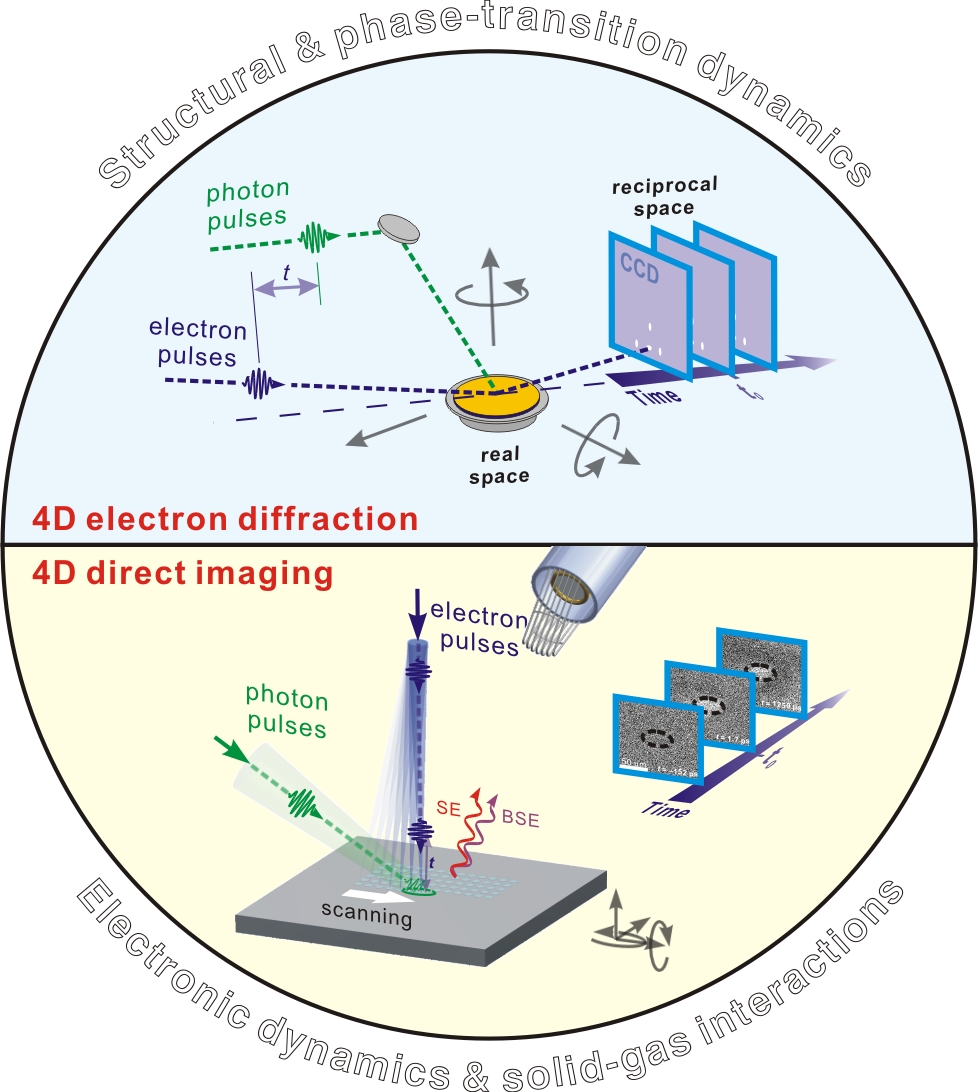Faculty Profile
 Ding-Shyue (Jerry) Yang
Ding-Shyue (Jerry) Yang
Professor
Department of Chemistry
Office: SERC, 1018
Contact: yang@uh.edu - 713-743-6022
Education: Ph.D., Caltech, 2009; M.S., National Taiwan University, 1999; B.S., National Taiwan university (Summa Cum Laude), 1997
Scientist: Caltech, 2010-2012
Postdoctoral: Caltech, 2009-2010
Our main research interest is to elucidate the correlation between electronic and structural dynamics in condensed matter and at interfaces, utilizing experimental techniques with simultaneous atomic-level resolutions in both space and time. The current methods of choice are time-resolved electron diffraction, in reflection and transmission geometries, and scan imaging. The nature of our study is interdisciplinary, involving materials and surface sciences, chemistry and physics, and the instrumental development needed to achieve our goals.
We strongly welcome all students who are interested in functional (phase switching, photovoltaic, or ultrahigh thermal conductivity) and 2-dimensional materials, as well as molecular assemblies and surface chemistry, to come and join us.
Ultrafast Electronic and Structural Dynamics
 Novel materials that hold promises for technological advances often have unique physical
and chemical properties. In typical studies, these properties are investigated with
the use of conventional analytical tools that are capable of providing a time-averaged
static picture of the materials at given conditions. However, many fundamental and/or
unusual phenomena, for instance, the electron-lattice coupling in highly correlated
materials, the insulator-metal transition and structural phase changes in transition-metal
oxides, negative thermal expansion, and interfacial interactions and solvation, may
require understanding particularly from a dynamical point of view. This is because
the relevant time scales involved are often ultrashort, in a femtosecond to nanosecond
range beyond the reach of traditional experimental techniques.
Novel materials that hold promises for technological advances often have unique physical
and chemical properties. In typical studies, these properties are investigated with
the use of conventional analytical tools that are capable of providing a time-averaged
static picture of the materials at given conditions. However, many fundamental and/or
unusual phenomena, for instance, the electron-lattice coupling in highly correlated
materials, the insulator-metal transition and structural phase changes in transition-metal
oxides, negative thermal expansion, and interfacial interactions and solvation, may
require understanding particularly from a dynamical point of view. This is because
the relevant time scales involved are often ultrashort, in a femtosecond to nanosecond
range beyond the reach of traditional experimental techniques.
We want to answer important questions such as the time-dependent responses induced in materials by ultrafast external stimuli, the elementary steps during nonequilibrium phase transformations, the dynamical interactions between substrates and adsorbates, etc. Such information in condensed matter, if resolved in detail with a proper spatiotemporal resolution, may be analogous to the knowledge of mechanisms for chemical reactions, which has been essential to the control and further development in chemistry. Likewise, the knowledge of ultrafast electronic and structural dynamics can offer crucial understanding of materials' unique properties and behaviors, and hence may lead to rational design or engineering of new materials for practical applications.
Ultrafast Electron Diffraction and Scan Imaging
 Time-resolved diffraction and imaging techniques have been developed in recent years
for the investigation of photoinduced dynamical changes, with an atomic-scale spatial
and femtosecond temporal resolution. Photons with a wavelength in the x-ray range
and high-energy electrons are the two main types of particles used for probing. The
latter type has a much larger scattering cross section by atoms, compared to photons,
and is easier to generate (via the photoelectric effect) and manipulate (by electric
and magnetic fields). Therefore, a photoelectron source with a moderate brightness
will have enough sensitivity to time-dependent changes and to surface studies. It
is also beneficial to construct a table-top apparatus that allows systematic research.
Time-resolved diffraction and imaging techniques have been developed in recent years
for the investigation of photoinduced dynamical changes, with an atomic-scale spatial
and femtosecond temporal resolution. Photons with a wavelength in the x-ray range
and high-energy electrons are the two main types of particles used for probing. The
latter type has a much larger scattering cross section by atoms, compared to photons,
and is easier to generate (via the photoelectric effect) and manipulate (by electric
and magnetic fields). Therefore, a photoelectron source with a moderate brightness
will have enough sensitivity to time-dependent changes and to surface studies. It
is also beneficial to construct a table-top apparatus that allows systematic research.
We want to incorporate ultrafast electron diffraction and scan imaging into an integrated instrument, sharing a femtosecond laser system and a modified electron gun capable of scanning. The ultrahigh vacuum chamber system that houses the electron source will be attached with different detectors, to collect signals and form images from high- and low-energy electrons in different probing geometries. The connection of a doser and gas-handling system to the chambers is also considered for interfacial studies. We believe that the versatile apparatus will be capable of addressing challenging questions in different areas of chemistry and physics.
- Outreach Volunteer of the Year Award, American Chemical Society, 2024
- Salute to Excellence Award, American Chemical Society Greater Houston Section, 2023
- Early Faculty CAREER Award, National Science Foundation, 2017–2022
- Robert A. Welch Junior Professorship, The Welch Foundation & TcSUH, 2013
- Herbert Newby McCoy Award, Caltech, 2009
- Lecturer, in Everhart Lecture Series, Caltech, 2008
- National Outstanding Graduate Research Award, Taiwan, 2000
- Yen Thesis Award, NTU, 1999
- Yuan-Tze Lee (Nobel Laureate) Scholarship, Taiwan, 1993-1997
- Gold Medal, 25th International Chemistry Olympiad, Italy, 1993